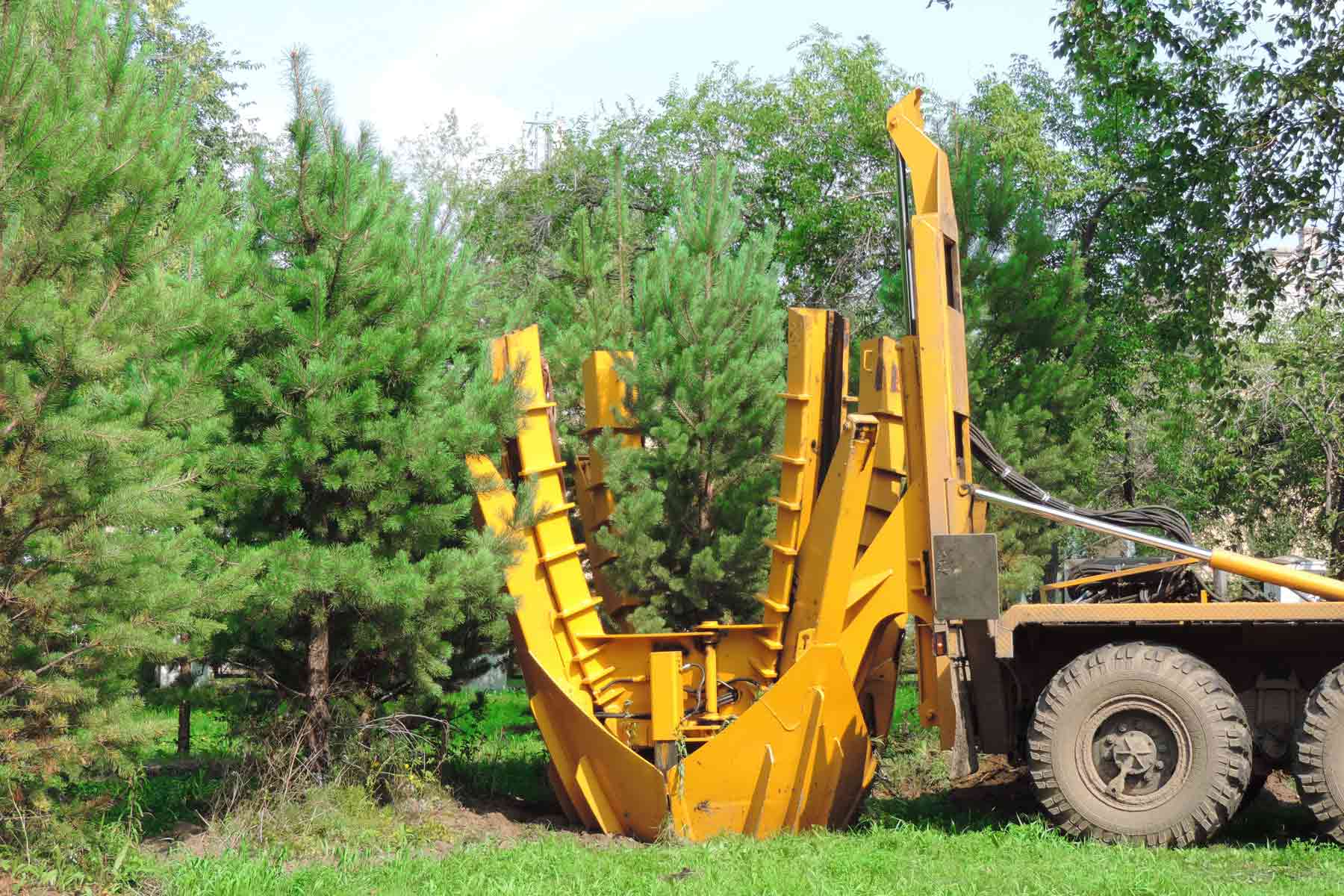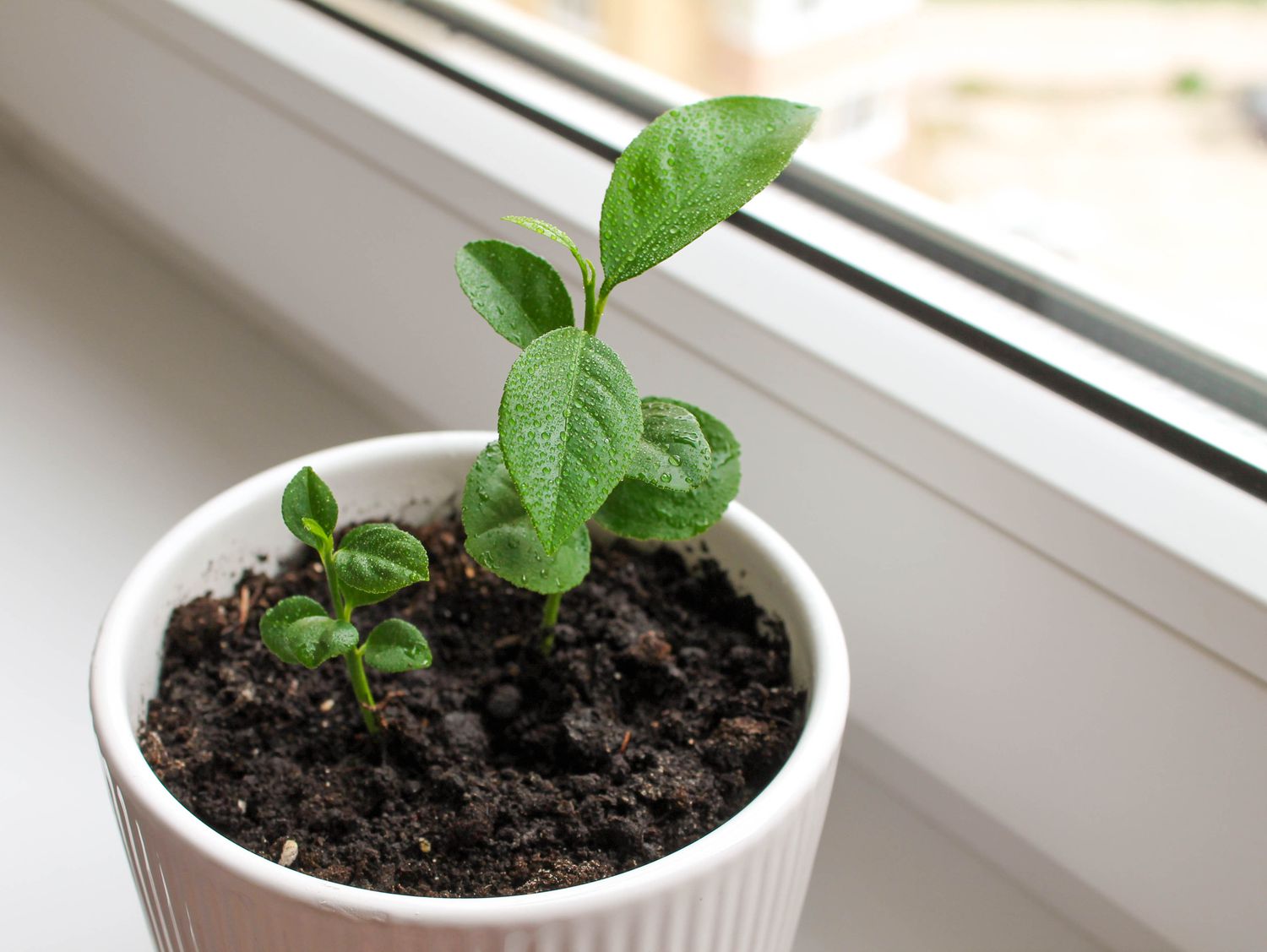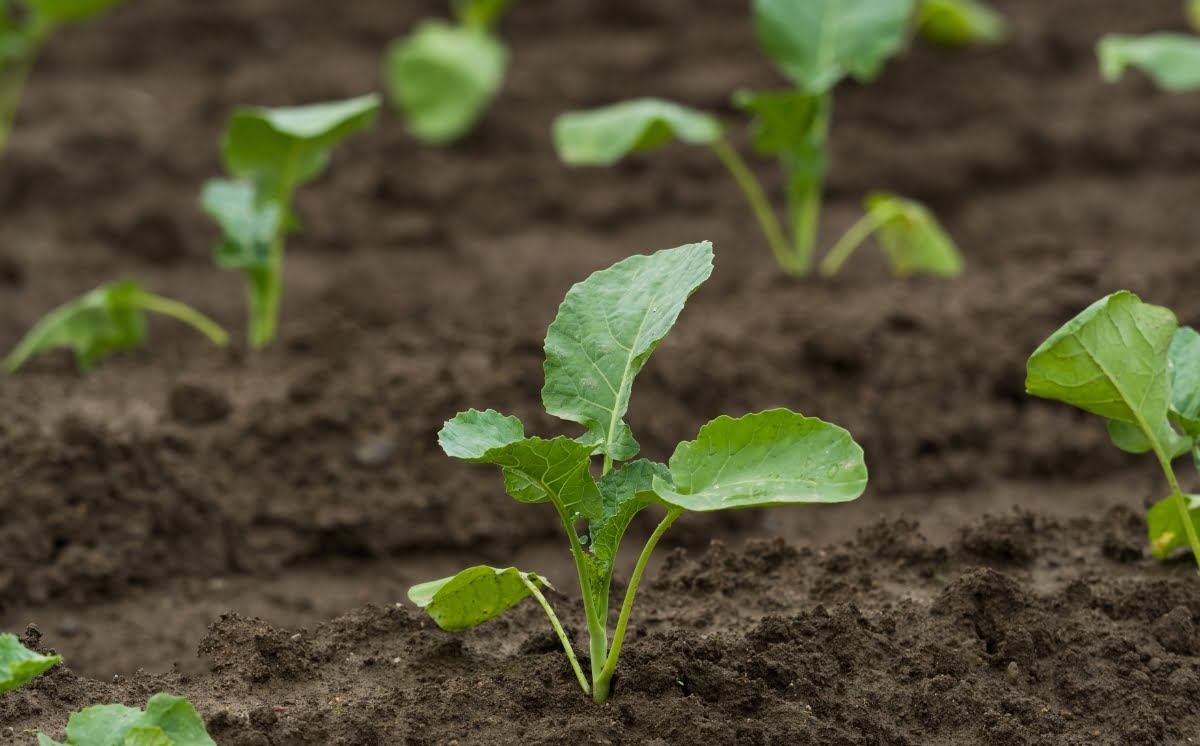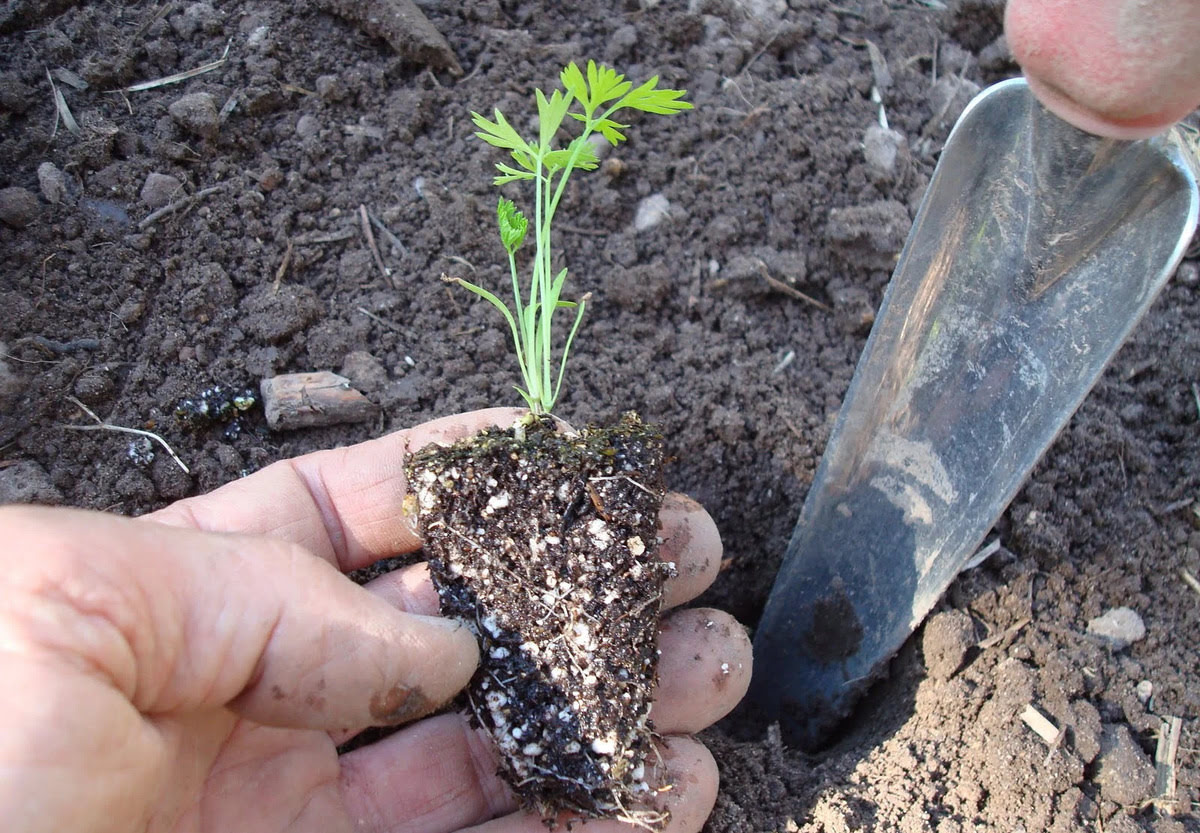Home>Gardening Techniques>Plant Care>When To Transplant Trees


Plant Care
When To Transplant Trees
Modified: February 6, 2024
Learn when it's the right time to transplant trees and ensure proper plant care with our expert tips and guidance.
(Many of the links in this article redirect to a specific reviewed product. Your purchase of these products through affiliate links helps to generate commission for Chicagolandgardening.com, at no extra cost. Learn more)
Table of Contents
- Introduction
- Factors to Consider Before Transplanting Trees
- Best Time of Year for Transplanting Trees
- Choosing the Right Location for Transplanting Trees
- Preparing Trees for Transplantation
- Transplanting Trees: Step-by-Step Process
- Caring for Transplanted Trees
- Signs of Successful Tree Transplantation
- Conclusion
Introduction
Transplanting trees is a delicate and sometimes necessary process that can help beautify your landscape, create more space, or rescue a tree at risk. However, it’s crucial to approach tree transplantation with caution and proper care to ensure the best chances of success.
Before diving into the details of when and how to transplant trees, it’s important to understand that not all trees are suitable for transplantation. Factors such as the age and overall health of the tree, as well as the specific species, should be taken into consideration. By carefully assessing these factors, you can determine if transplanting is a viable option for your tree.
In this article, we will explore the various factors to consider before transplanting trees, discuss the best time of year for transplantation, cover choosing the right location, outline the step-by-step process of transplanting trees, and provide valuable tips for caring for transplanted trees. By the end, you’ll have a comprehensive understanding of how to successfully transplant trees and ensure their long-term growth and vitality.
Factors to Consider Before Transplanting Trees
Transplanting a tree is a significant undertaking that requires careful consideration of several factors to ensure the best chances of success. By understanding and evaluating these factors beforehand, you can reduce stress on the tree and increase its chances of thriving in its new location. Here are the key factors to consider before transplanting trees:
- Tree Size and Age: The size and age of the tree play a crucial role in determining its transplantability. Younger, smaller trees tend to adapt better to transplantation compared to larger, more established ones. It’s generally recommended to transplant trees with a trunk diameter of fewer than two inches for optimal results.
- Root System: The health and structure of the tree’s root system are critical factors to consider. Transplanting trees with an extensive root system can be challenging, as it increases the risk of root damage during the process. Ideally, look for trees with a well-developed root system that is not overly compacted.
- Species: Different tree species have varying levels of tolerance to transplantation. Some species, such as maple and birch, have shallow root systems and may not transplant well. Before proceeding, research the specific species to understand its transplant success rate and adaptability.
- Season and Weather Conditions: The time of year and weather conditions are crucial considerations. Transplanting during periods of stress, such as extreme heat or cold, can significantly impact the tree’s ability to establish itself in its new location. It’s best to transplant trees during cooler, milder seasons when the tree is dormant or has reduced foliage.
- Watering and Maintenance: Adequate watering before and after transplantation is essential for the tree’s survival. Ensure the tree is well-watered in the weeks leading up to transplantation to provide hydration and reduce moisture stress. Additionally, regular maintenance, such as pruning dead or damaged branches, can enhance the tree’s overall health before transplantation.
- Transplantation Distance: The distance of the transplantation is another critical factor to consider. Transplanting a tree within your property is generally less stressful than moving it to an entirely new location. If moving the tree a considerable distance, proper planning, equipment, and professional assistance may be required.
By carefully evaluating these factors and addressing any potential issues, you can determine if transplanting a tree is a suitable option. Remember, proper planning and preparation are key to ensuring successful tree transplantation.
Best Time of Year for Transplanting Trees
Choosing the right time of year to transplant trees is crucial for their overall success and survival in their new location. The ideal timing will depend on several factors, including the specific tree species, local climate, and current weather conditions. Here are some general guidelines to consider when determining the best time of year for transplanting trees:
- Tree Dormancy: Transplanting during the tree’s dormant period, when it is not actively growing, is generally recommended. For deciduous trees, this is typically in late fall after the leaves have dropped or early spring before bud break. During dormancy, trees are less likely to experience transplant shock and can focus their energy on root establishment.
- Mild Weather: Avoid transplanting trees during extreme weather conditions, such as extreme heatwaves, freezing temperatures, or heavy rainfall. Choose a time when the weather is relatively mild and stable, allowing the tree to adjust to its new environment without undue stress.
- Avoiding Frost or Heat Spells: It’s important to avoid transplanting trees during periods of frost or heat spells. Freezing temperatures can damage the tree’s roots, while excessive heat can dehydrate the tree and lead to transplant shock. Monitor the weather forecast closely and choose a time when temperatures are moderate and stable.
- Soil Moisture: Ideally, transplant trees when the soil is moist but not overly saturated. This will help facilitate root growth and establishment in the new location. If the soil is too dry, water the tree thoroughly a few days before transplantation to ensure it is adequately hydrated.
- Transplanting Before Bud Break: For trees that bloom in spring, such as flowering cherries or magnolias, it’s best to transplant them just before bud break. This allows the tree to establish its root system before allocating energy to flowering and leaf development.
- Local Climate Considerations: Different regions have unique climate patterns that can influence the best time for tree transplantation. Research the specific requirements of your tree species and consult with local arborists or gardening experts to determine the most favorable time in your area.
Remember, while these guidelines can provide a general framework, it’s essential to assess the individual needs of each tree species and consider any specific factors unique to your location. By transplanting trees at the optimal time, you can significantly improve their chances of successful establishment and long-term growth in their new environment.
Choosing the Right Location for Transplanting Trees
Selecting the right location for transplanting trees is crucial for their long-term health and viability. The new site should provide optimal growing conditions and meet the specific requirements of the tree species. Here are some key considerations when choosing the right location:
- Sunlight: Assess the sunlight requirements of the tree species you plan to transplant. Some trees thrive in full sun, while others prefer partial or full shade. Observe the sunlight patterns in the new location throughout the day to ensure it aligns with the tree’s needs.
- Soil Condition: Consider the soil quality and composition of the new site. Different trees have different soil preferences, such as well-drained soil, sandy soil, or loamy soil. Conduct a soil test to determine the pH levels and nutrient content and make any necessary amendments to provide an optimal growing environment for the tree.
- Space and Growth Potential: Evaluate the available space in the new location and consider the tree’s growth potential. Ensure that there is enough room for the tree’s mature height and canopy spread without causing any interference with nearby structures or other plantings. Planning for the long-term growth of the tree will prevent the need for future relocations.
- Water Availability: Adequate water supply is crucial for the tree’s survival and growth. Assess the availability of water sources in the new location, such as nearby irrigation systems or natural water sources. Avoid areas prone to excessive flooding or waterlogged soil, as it can lead to root rot and other water-related issues.
- Microclimate Considerations: Microclimates within your landscape can significantly impact tree health. Evaluate factors such as wind exposure, frost pockets, and heat traps. Choose a location that minimizes these potential stressors and provides a more favorable microclimate for the tree.
- Proximity to Structures: Consider the proximity of nearby structures, such as buildings, fences, or power lines. Ensure that there is sufficient distance between the tree and any structures to avoid any potential damage or interference over time. Also, check for underground utility lines that could be affected by root growth.
By carefully evaluating these factors and selecting a suitable location, you can provide the transplanted tree with the best possible growing conditions. Remember to research and understand the specific needs of the tree species you are transplanting to ensure its long-term vitality and successful adaptation to its new surroundings.
Preparing Trees for Transplantation
Properly preparing trees for transplantation is essential to minimize stress on the plants and increase their chances of survival. Taking the time to prepare the tree and its root system will help ensure a successful transition to its new location. Here are the key steps to follow when preparing trees for transplantation:
- Pruning: Start by pruning dead, damaged, or diseased branches from the tree. This will help improve its overall health and reduce stress during the transplant process. Avoid removing more than one-third of the tree’s foliage, as this can negatively impact its ability to produce energy through photosynthesis.
- Watering: Adequately watering the tree in the weeks leading up to transplantation is crucial. Ensure that the tree is well-hydrated, as this will reduce transplant shock and help the roots establish quickly in the new location. Water deeply and evenly, ensuring that the entire rootball is moist.
- Cleaning Around the Base: Clear away any weeds, debris, or mulch from around the base of the tree. This will reduce competition for nutrients and water and minimize the risk of pests and diseases. Gently aerate the soil around the tree’s root zone to encourage proper drainage and root growth.
- Root Pruning: In some cases, root pruning can help stimulate new root growth and prepare the tree for transplantation. This technique involves digging a trench in a circle around the tree, about 12 to 18 inches from the trunk, and severing some of the larger roots. Root pruning encourages the development of new feeder roots, which will make the tree more resilient during transplantation.
- Protecting the Rootball: Take measures to protect the tree’s rootball during the transplant process. For smaller trees, wrap the rootball in burlap to secure the soil and prevent it from crumbling or falling apart. For larger trees, use a tree spade or similar equipment to create a compact rootball that can be safely transported to the new location.
- Marking the North Side: Before removing the tree from its current location, mark the north side of the tree. This will help ensure that it is planted in the same orientation in the new location, allowing it to maintain its natural growth pattern and optimize sun exposure.
By following these steps, you can adequately prepare your trees for transplantation and increase their chances of successful adaptation to their new environment. Taking the time to properly care for the tree before, during, and after transplantation will ensure its long-term health and growth.
Transplanting Trees: Step-by-Step Process
Transplanting trees requires careful planning and execution to minimize stress on the tree and maximize its chances of survival. Here is a step-by-step process to guide you through transplanting trees:
- Choose the Right Time: Ensure you are transplanting the tree during the optimal time, as discussed in the previous section. This is usually during the tree’s dormant period or when the weather is mild.
- Prepare the New Location: Prepare the new planting hole in the desired location. Ensure that it is properly sized, allowing for the future growth of the tree’s root system. The depth of the hole should match the depth of the rootball.
- Water the Tree: Water the tree thoroughly the day before the transplant. Proper hydration will help keep the roots moist and reduce transplant shock.
- Prune the Tree: Trim any broken or damaged branches from the tree, ensuring that the pruning cuts are clean and made just outside the branch collar. Avoid excessive pruning as it can stress the tree.
- Prepare the Rootball: Carefully dig around the tree’s rootball, ensuring that you include as much of the root system as possible. Use a sharp spade or tree spade to minimize damage to the roots.
- Lift the Tree: Lift the tree carefully, taking care not to damage the rootball. Use straps or burlap to secure the rootball and prevent it from falling apart during the transplant process.
- Transplant the Tree: Transfer the tree to the new planting hole, ensuring that it is level with or slightly above the ground. Backfill the hole with soil, gently tamping it down to remove any air pockets. Avoid compacting the soil too firmly, as it can hinder root growth.
- Water and Mulch: Water the tree immediately after transplanting, saturating the soil around the rootball. Apply a layer of organic mulch around the base of the tree, leaving a gap around the trunk to prevent moisture buildup and potential rotting.
- Stake if Necessary: If the tree is tall or has a weak root system, consider staking it to provide additional support. Use soft, flexible ties to secure the tree to the stakes, ensuring that it has enough room to sway naturally.
- Monitor and Care: Keep a close eye on the transplanted tree and provide regular care. Water the tree deeply and regularly, especially during the first year after transplantation. Prune any dead or damaged branches as needed. Monitor for pests and diseases and take appropriate measures to address them.
By following these steps, you can ensure a smooth and successful tree transplantation process. Remember, proper care and attention to detail are crucial for the tree’s long-term health and well-being in its new location.
Caring for Transplanted Trees
Caring for transplanted trees is essential to help them establish roots, adapt to their new environment, and thrive in the long term. By providing the proper care and attention, you can increase their chances of survival and promote healthy growth. Here are some key steps to follow when caring for transplanted trees:
- Watering: Proper watering is crucial for the tree’s survival and establishment in its new location. Monitor the soil moisture regularly, especially during the first year after transplantation. Water deeply and infrequently, allowing the soil to dry out slightly between waterings. Provide enough water to penetrate the entire rootball and encourage deep root growth.
- Mulching: Apply a layer of organic mulch around the base of the tree, leaving a gap around the trunk to prevent moisture buildup and potential rotting. Mulch helps retain soil moisture, regulate temperature, suppress weeds, and protect the tree’s roots. Maintain a layer of mulch about 2-3 inches deep, extending it a few feet beyond the drip line of the tree.
- Pruning: Limit pruning to remove any dead, damaged, or diseased branches. Avoid excessive pruning during the first year after transplantation as it can further stress the tree. Wait until the tree has fully established itself before considering more significant pruning for shaping or thinning purposes.
- Fertilizing: Newly transplanted trees may benefit from a slow-release fertilizer to provide essential nutrients. However, it is generally recommended to wait until the second growing season before applying fertilizer. Consult with a local arborist or gardening expert to determine the appropriate type and timing of fertilization for your specific tree species.
- Weed Control: Regularly check for weeds around the base of the tree and remove them promptly. Weeds compete with the tree for nutrients and water, potentially hindering its growth and development. Be careful when weeding to avoid damaging the tree’s root system.
- Protection from Harsh Elements: Shield the transplanted tree from harsh elements, such as strong winds, extreme temperatures, and excessive sunlight. Use windbreaks, shade cloth, or burlap to provide temporary protection until the tree becomes better established in its new location.
- Regular Monitoring: Keep a close eye on the transplanted tree and monitor its health regularly. Look for any signs of stress or potential issues, such as wilting leaves, discoloration, pest infestations, or disease symptoms. Address any problems promptly to prevent further damage and promote the tree’s recovery.
By following these care guidelines, you can contribute to the successful establishment and long-term health of your transplanted trees. Remember that each tree is unique, and specific care requirements may vary. Tailor your care approach to the specific needs of the tree species and seek professional advice if needed. With proper care, your transplanted trees can thrive and enhance the beauty and vitality of your landscape for years to come.
Signs of Successful Tree Transplantation
After transplanting a tree, it’s important to monitor its progress and look for signs of successful adaptation and establishment. These signs indicate that the tree has successfully overcome the transplant shock and is on its way to healthy growth and development. Here are some key signs to look for that indicate a successful tree transplantation:
- New Growth: One of the most positive signs of successful transplantation is the emergence of new growth. Look for new buds, leaves, or shoots appearing on the tree. This indicates that the tree has established enough root growth to support new foliage.
- Foliage Retention: If the tree retains its existing foliage throughout and after the transplantation process, it is a positive indicator. It shows that the tree has efficiently managed the transplant shock and is maintaining its ability to photosynthesize and produce energy.
- Root Development: Check for signs of new root growth around the base of the tree. Gently inspect the soil around the rootball and look for fine, white roots extending into the surrounding soil. New root development is an excellent sign that the tree is establishing its root system in its new location.
- Stability: A successfully transplanted tree should exhibit stability and show no signs of leaning or instability. This is an indication that the root system has anchored itself securely in the new soil and the tree is effectively maintaining its position.
- Healthy Appearance: Look for a vibrant, healthy appearance in the tree’s foliage. The leaves should be a uniform color, and there should be no signs of wilting, discoloration, or insect damage. A healthy appearance indicates that the tree is obtaining the necessary nutrients and water for growth.
- Seasonal Adaptation: A tree that successfully adapts to the seasonal changes in its new location is a positive sign. It should exhibit normal patterns of bud break, flowering, and leaf shedding according to its species and specific climatic conditions.
- Increased Size: Over time, you should notice the transplanted tree gradually increasing in size. This growth can be seen in the height, trunk diameter, and overall canopy spread. Continuous growth indicates that the tree is establishing itself and thriving.
- Disease and Pest Resistance: A successfully transplanted tree should exhibit resistance to common diseases and pests in its new environment. It should remain relatively free from infestations or show the ability to recover quickly if any issues arise.
- Survival Rate: Ultimately, the most straightforward sign of a successful tree transplantation is its survival. If the tree continues to thrive, maintain its health, and survive for an extended period, it is a clear indication of a successful transplant.
Keep in mind that these signs may take time to manifest, and results may vary depending on the tree species, transplanting conditions, and care provided. Patience, proper care, and ongoing monitoring are crucial in ensuring the long-term success of transplanted trees.
Conclusion
Transplanting trees can be a rewarding endeavor that allows you to enhance your landscape, create space, or save a tree at risk. However, it’s important to approach tree transplantation with care and proper planning to ensure the best chances of success.
In this article, we explored several crucial aspects of tree transplantation. We discussed the factors to consider before transplanting trees, including size and age, root system health, tree species, season, watering, and transplantation distance. We also highlighted the best time of year for tree transplantation, considering factors such as dormancy, mild weather, and soil moisture. Additionally, we covered the importance of choosing the right location for transplanting trees, including sunlight, soil condition, space, water availability, microclimate, and proximity to structures.
We provided a step-by-step process for transplanting trees, emphasizing the importance of proper preparation, pruning, root care, and protecting the tree’s rootball. We also outlined the essential care requirements for transplanted trees, including watering, mulching, pruning, fertilizing, weed control, and protection from harsh elements. Finally, we discussed signs of successful tree transplantation, such as new growth, foliage retention, root development, stability, healthy appearance, seasonal adaptation, increased size, disease, and pest resistance, as well as overall survival.
Remember, successful tree transplantation requires careful attention and ongoing care. Ensure you research and understand the specific needs of your tree species, consult with professionals if needed, and closely monitor the tree’s progress in its new location. By following these guidelines and providing proper care, you can increase the likelihood of a successful tree transplantation and enjoy the long-term beauty and benefits of your transplanted trees.










